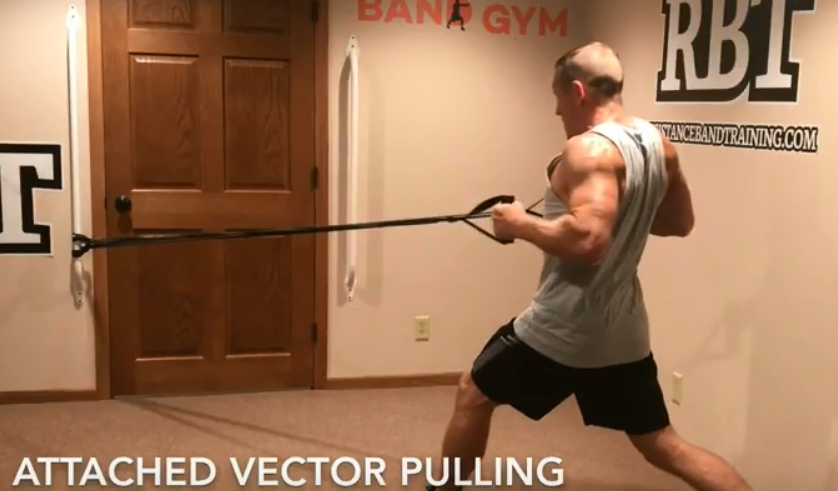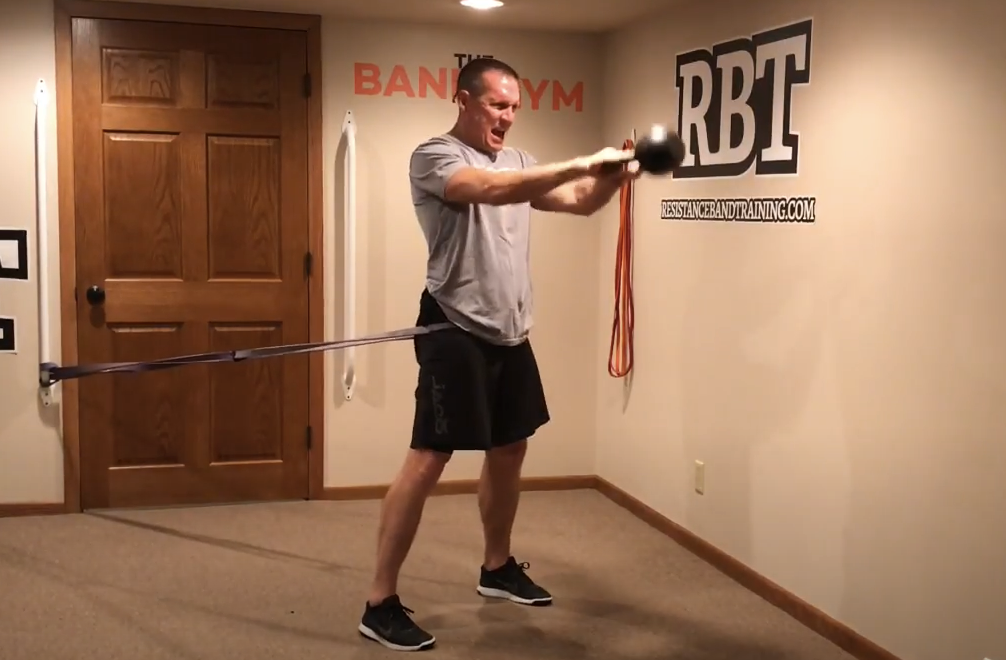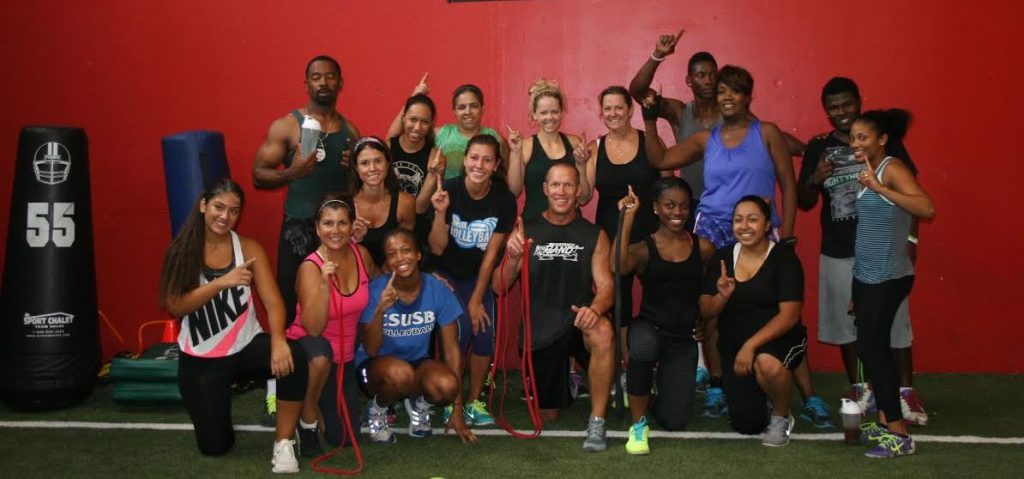10 Attached Band Pulling Exercises
Pulling exercises should do more than just strengthen your mid back muscles.
This is one of the huge advantages of training the movement of pulling with resistance bands. Not only does attached band pulling increase muscle size and strength, but it also creates several additional benefits that are not possible with machine or free weight pulling.
10 Added Benefits of Attached Band Pulling
- Trains hip hinging which is a key functional movement for all ground-based movements including squatting, lunging and deadlifting.
- Increases glute activation and strength as long as feet are on the ground.
- Automatically activates secondary scapular muscles because glutes are directly wired to scapular muscles when pulling is being performed.
- Allows you to train pulling in all 3 planes of motion which builds muscle definition and strengthens small secondary pulling muscles.
- Increases rotator cuff flexibility because rotation can easily be brought into most attached band pulling exercises.
- Creates shoulder joint mobility with repetitive distraction created by looping the band over the wrist and eliminating grasping. No grasping keeps deltoids less active and in turn allows the band to distract the shoulder joint.
- Increases muscle recruitment of mid back muscles because of the ascending resistance which increases as a person pulls further into the range of motion.
- Increases mid spine rotational mobility which is inherently lost as the body ages.
- Increases ground reaction control and stabilization with walking and running because the lower body has to stabilize against the ground on every repetition.
- Optimizes each set for resistance because it is very easy to increase or decrease resistance on the fly with resistance bands.
My Top 10 Attached Band Pulling Exercises
- Squat Pull
- Single Arm Squat Pull
- Single Arm Rotational Pull
- Iso Squat Pull
- Split Squat Pull
- Step Back Pull
- Lat Pull
- Power Pull
- Side Pillar Pull
- Front Pillar Pull



